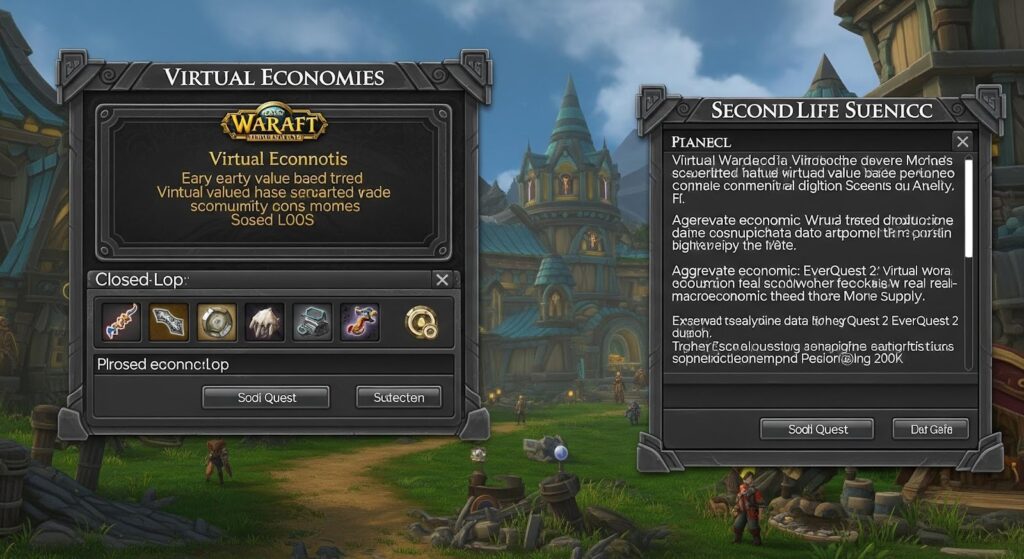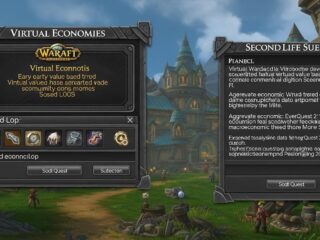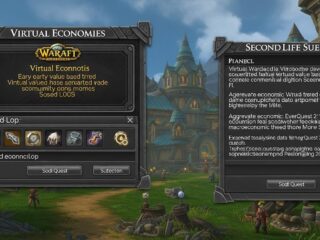
Gaming communities established foundational principles of digital ownership and virtual economics decades before cryptocurrency captured mainstream attention. The gaming industry’s experimentation with virtual currencies, tradable digital assets, and player-driven economies created conceptual frameworks that now underpin contemporary blockchain financial systems. Understanding how these virtual economies evolved alongside market indicators like btc price, currently trading around $101,000-$105,000 in November 2025, reveals how gaming innovations directly influenced recognized digital assets commanding substantial real-world valuations.
Early Virtual Economies and Digital Scarcity
Massively multiplayer online role-playing games including World of Warcraft and Second Life pioneered virtual economies as early as the late 1990s and early 2000s, creating internal markets where players traded digital goods and currencies. These closed-loop systems demonstrated that virtual items could hold perceived value based on scarcity, utility, and community consensus rather than physical properties. Research analyzing EverQuest 2’s transaction data revealed that aggregate economic behavior in virtual worlds follows real-world macroeconomic patterns, with production, consumption, and money supply metrics behaving consistently with established economic theories.
The emergence of real-world trading for virtual assets occurred organically despite developer resistance. Players began exchanging game currencies and rare items for actual money through unofficial channels, creating gray markets that demonstrated genuine economic value for intangible digital possessions. This phenomenon preceded cryptocurrency by years, establishing precedent that digital scarcity combined with community demand creates measurable economic value independent of physical form or centralized authority backing.
From Closed Systems to Open Blockchain Economies
Traditional gaming currencies operated within isolated ecosystems entirely controlled by developers who could modify supply, adjust drop rates, or even delete accounts arbitrarily. This centralized control created vulnerabilities where players invested time and money into assets they never truly owned. Blockchain technology addressed these limitations by implementing decentralized ledgers where ownership exists independently of any single entity’s control.
The introduction of NFTs revolutionized digital ownership by providing cryptographic proof of authenticity and ownership recorded on immutable public blockchains. Games like Axie Infinity, Decentraland, and CryptoKitties demonstrated how blockchain enables players to own, trade, and monetize in-game assets with verifiable scarcity and provable ownership. This transition from developer-controlled virtual goods to player-owned digital assets represents gaming’s most significant contribution to broader financial innovation.
Play-to-Earn Models Bridging Virtual and Real Economies
Play-to-earn gaming mechanics transformed the value proposition from entertainment consumption to economic participation. The global blockchain gaming market grew from $4.6 billion in 2022 to an estimated $154.46 billion in 2023, projected to reach $614.91 billion by 2030. Players earn cryptocurrency tokens and NFT rewards through gameplay activities including winning battles, completing missions, trading virtual real estate, and participating in governance mechanisms.
Skilled players now generate income comparable to part-time employment through gaming activities, treating their virtual asset portfolios as investment vehicles diversified across multiple blockchain games. This economic model represents fundamental departure from traditional gaming where all value flowed unidirectionally from players to publishers. The tokenized nature of these economies enables in-game currencies to maintain real-world value through cryptocurrency exchanges and peer-to-peer trading platforms, creating seamless bridges between virtual achievements and tangible economic benefits.

Influence on Mainstream Digital Asset Recognition
Gaming’s normalization of digital ownership directly influenced how broader financial markets approach cryptocurrency and blockchain assets. When btc price fluctuations attract institutional attention, the underlying acceptance that digital scarcity creates economic value traces philosophical roots to gaming communities’ decades-long experience trading virtual goods. The blockchain and NFTs gaming market alone projects growth from $12.78 billion in 2024 to $2,721 billion by 2035, demonstrating how gaming concepts scale into mainstream financial applications.
Cross-game asset interoperability pioneered in blockchain gaming platforms provides templates for financial system integration. Assets from one game functioning in another establishes precedent for digital currencies moving seamlessly across financial ecosystems without intermediary friction. This interoperability concept directly informed cryptocurrency networks designed for frictionless value transfer across borders and platforms.
Decentralized Governance and Community Economics
Gaming introduced decentralized autonomous organization concepts through community-driven economic systems where players collectively influence virtual world policies. Token holders participate in governance decisions affecting game economies, creating democratic structures that distribute power beyond central development teams. These governance frameworks provided practical demonstrations of decentralized decision-making that blockchain financial protocols later formalized through smart contracts and voting mechanisms.
The convergence of gaming and finance creates interconnected digital ecosystems where virtual world economies operate with sophistication rivaling traditional financial markets. NFT-based games embedded within metaverse environments enable seamless transitions between gaming, social interaction, and commerce, blurring boundaries between entertainment and economic participation. This integration demonstrates gaming’s role not merely as entertainment medium but as incubator for financial innovations reshaping how society conceptualizes value, ownership, and economic exchange in increasingly digital contexts.








